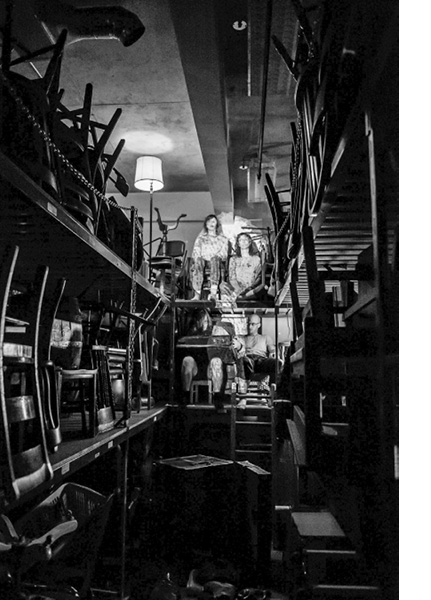
THE VOICE IN THE CLOSET
first performed on August 28, 2013
Timms Centre for the Arts, Edmonton, Canada
performed five times in 2013
PIET DEFRAEYE
Raymond Federman, Gordana Zivkovic, Scott Smallwood, Patrick Arès-Pilon, Justine Moelker, Marko Zivkovic, Gerry Morita, Kristine Nutting, Zachary Polis, Jake Hastey, Sylvia Grist
Edmonton, Canada
773679195d773679195e773679195f773679195r773679195a773679195e773679195y773679195e773679195@773679195u773679195a773679195l773679195b773679195e773679195r773679195t773679195a773679195.773679195c773679195a
vimeo.com/64825269
THE VOICE IN THE CLOSET
PIET DEFRAEYE
“The Voice in the Closet” was based on Raymond Federman’s (1928-2009) short eponymous novella, an incredibly intimate text which continuously eludes and undercuts the subjective. It is the novelist’s desperate effort to document the arrest and subsequent disappearance of his parents and two sisters by the Nazis when he was a twelve-year old child in Paris during WWII, a project doomed to fail. When, at age 55, he was finally ready to re-visit those seven minutes in the early years of the war, there was no story, no cause, no linearity, no structure and no logic that could contain or explain what happened, only a linguistic excess of words. As we are trained in our cultural practice to look for recognition, signification and meaning, we also deflect and reject failure—though it remains overwhelmingly a structuring principle in our interactions and in our iterations. Federman’s text embraces failure as its main aesthetic. The world conjured by the text is one of fragmentation, ellipsis, obfuscation, repetition, resistance, false starts, redundancy and excess, without an ending. Our performative response to the text was both linguistic as well as physical, but also was supported by fragile and unstable light and a soundscape that was precariously live broadcast via FM radios dispersed throughout the room.
We staged this production in the furniture storage space of the Timms Theatre in Edmonton, a cavernous space filled with floor-to-ceiling industrial metal shelving in which the theater stores its huge collection of stage furniture and larger props. The wide variety and historically colliding nature of the hodge-podge seemed a perfect background to situate this failed re-telling of a story of loss. Noted objects included a huge hobby horse, a public phone booth, an out-of-tune piano, a big collection of old suit-cases and travel trunks, fitting dummies and scores of lamps and fixtures. The text itself was also fragmented, shared, repeated and echoed between the performers—while the director, lying on a Freudian recline-chair on a second-level shelf, read the entire text deadpan into a microphone, a live broadcast overlaying the ongoing soundscape through the dozen or so radios dispersed through the space. This created a multi-layered acoustic and verbal environment inside a multi-layered physical environment, with actors moving through the space, lit by unstable light from projectors showing historical footage of the invasion of Poland and the occupation of Paris and Warsaw. This, combined with overheads dispersed in the space, allowed actors to use historical pictures and fragments of the text on transparencies that were then projected on actor’s bodies and on furniture. The originating text thus became part of the physical environment itself.